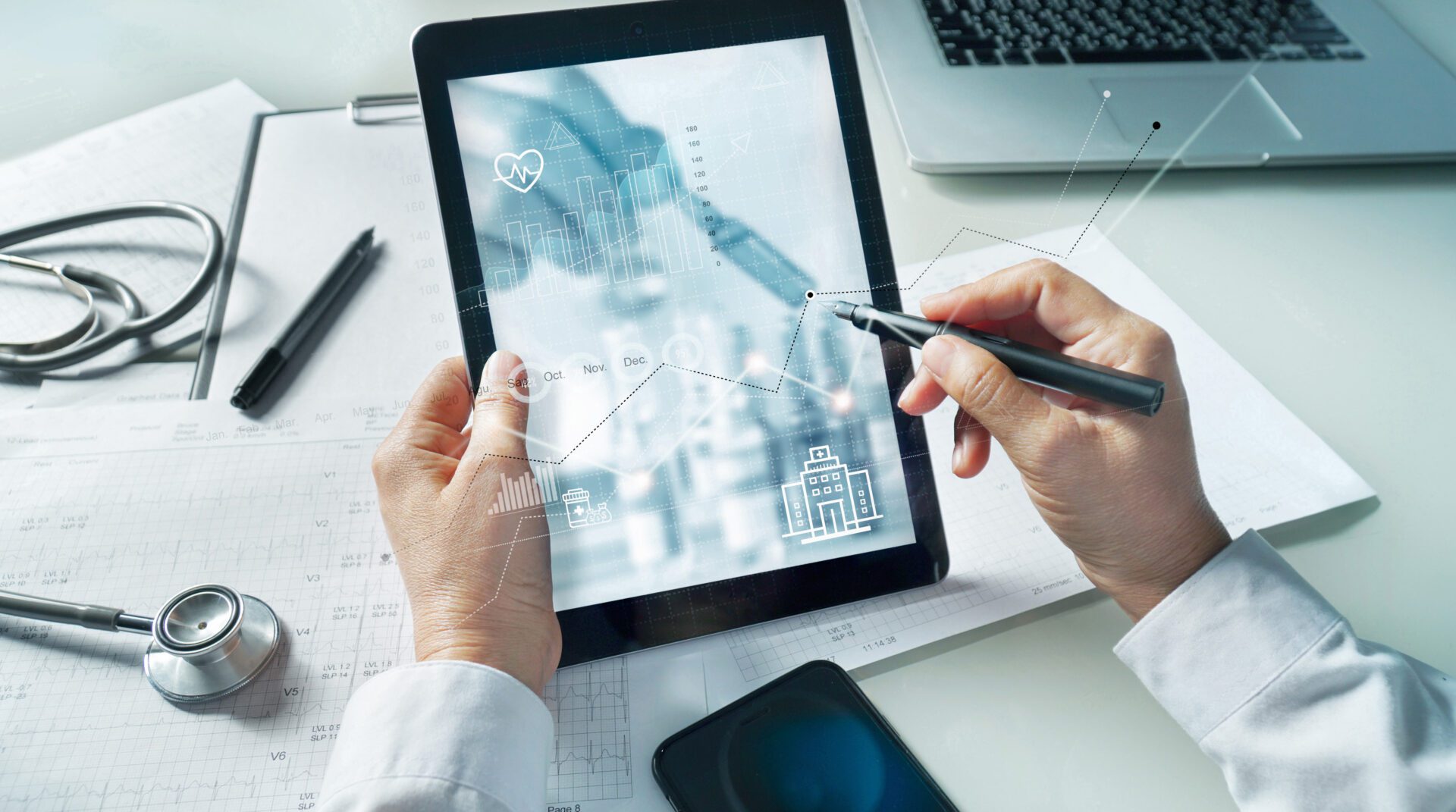IOT in Healthcare How IOT is
Supporting Patient Welfare
What does IOT stand for?
IOT stands for the ‘Internet of Things’. It has become a ‘catch for all’ term for any device or sensor technology that communicates to a system wirelessly. It is similar to how your mobile phone works versus a landline. IOT sensors gather data locally and then send the information captured to a separate system to be analysed. What this means is that there are no physical cables required, so immediately there is the benefit of flexibility and ease of installation. There is also a mobility benefit, in that sensors can be moved and still send data.
IOT devices communicate with the outside world using a gateway. This is analogous to your mobile phone connecting to a phone mast. These gateways are isolated from your IT network which then adds another key benefit, security.
These two characteristics make IOT devices a really exciting technology. In the same way we would struggle to survive without our mobile phones, as time goes by, we will struggle to wonder what we did before IOT.
Want to learn more about Sensor Types?

Mitigating Infection Control Risks
Perhaps the key focus of every healthcare setting is to heal and not harm. ‘Primum non nocere’ or ‘first, do no harm’ requires that institutions don’t inadvertently harm the patient and by extension the employee. The most common risk patients and employees are exposed to is infection.
Post Covid19 we are all more cognisant of airborne infection. Hospitals and other institutions, have spent large sums of money on air filtration systems to help reduce the harmful effects of poor air quality. The primary control measures in a healthcare setting are social distancing and mandatory mask-wearing.
CO2 levels in the air are often used as a proxy for the quality of air filtration. But CO2 levels are directly linked to the number of people in a given space. A good understanding of area usage and occupancy levels across time can help to decide what else is needed to prevent airborne infection.
A Simple Solution
CO2 sensors are simple devices that can be left in each room or common area to measure the CO2 levels in that space. If CO2 levels rise above a certain level, normally 1550 ppm (parts per million), then a warning can be triggered. This can be as simple as asking people to vacate a space or open a window. Alternatively, it can be a message or instruction sent to a Building Management System (BMS), to switch on a specific air handling unit (AHU) to reduce the CO2 levels.
There is a dual benefit to this approach. There is the infection control monitoring element along with an energy-saving benefit. When occupancy levels are low, then the CO2 levels from human activity should also be low. Therefore running air handling units continuously in all areas of a hospital is likely to be unnecessary and will certainly be expensive. Linking occupancy to equipment usage is a secondary benefit.
There is another positive reason why understanding your air quality and improving its quality is beneficial. Research links improvements in air quality to benefits around productivity, problem-solving and creativity. In a healthcare setting that may lead to better patient outcomes also.
An Effective Scalable Solution
The beauty of IOT sensors is that they can be deployed by simply sticking them on a wall or within a shared area. A trial area can be selected initially to see if there is a benefit in welfare outcomes based on air quality. The hardware can be moved to a new area and more data gathered to prove or disprove the value of monitoring air quality before a larger rollout is justified.
IOT is still evolving, but even now it has become a ‘plug and play’ technology provided the data can be fed into a software solution to be analysed and action is taken to resolve an issue. Displaying CO2 levels on a system dashboard provides peace of mind to some, while acting on the data once a threshold value is reached makes the solution practical.


